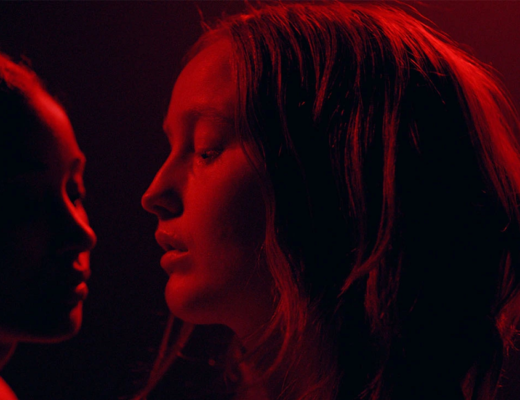The once-industrial, now student-populated city of Sheffield plays host, each year, to the UK’s biggest and most prestigious documentary festival. Sheffield Doc/Fest is a week-long schmooze fest spectacle, where you are as likely to spot Asif Kapadia on a bus as you are Eric Hynes in a Wetherspoons Pub. But insider baseball doesn’t matter to bemused locals who, from experience, treat the event with a shrug. That dynamic has changed in this year’s hybrid edition, for pandemic-related reasons of which you won’t need to be reminded.
And perhaps the new normal has permitted Doc/Fest to reassess its priorities. The festival came under serious fire following the acrimonious departure of head programmer Luke Moody in 2019 — that year’s programme having seemed dictated by made-for-TV documentaries and Netflix sponsorship. Online, at least, the creeping feeling of corporate takeover has been pushed aside by the bravery of this year’s new programming team, including risk-taking curators like Berwick Film Festival’s Herb Shellenberger.
I’ve never seen a competition give equal weight to films of all duration by placing long, short, and mid-length films in the same strand. The retrospective “fragments from the history of Black British Cinema” is a never-ending realm of discovery, while the “Ghosts and Apparitions” strand stretches our cinematic associations to those words and documentary itself, plucking an exciting range of films from Theo Anthony’s trendy All Light, Everywhere to bold choices like Hou Hsiao-Hsien’s 1985 masterpiece A Time to Live, A Time to Die (if the cine-memoir can be considered Documentary, then let’s see Joanna Hogg’s The Souvenir in next year’s lineup!).
This mixed-medium programme has kept the Moody mission aflame. Sheffield Doc/Fest takes imaginative leaps, puts specific spotlight on nations and issues, and always takes the path less trodden as it asks why we watch documentary. Three notable British films from this year’s slate highlight this.

Credit: Sheffield DocFest
Caught/Caer
You would be forgiven for asking what Caught (Caer) is doing in the UK Competition. After all, it follows and was produced in collaboration with New York’s TRANSgrediendo Intercultural Collective (CITG), a grassroots nonprofit organization defending the rights of transgender Latina migrant women. Directed by the London-based Nicola Mai, a self-described ethnographer who shoots the city like a steamy desert, Caught compellingly morphs the experiences of members of CITG into fictional characters and events. Beginning with a trans sex worker’s arrest and her john’s subsequent flight, Mai gently pushes the audience along with Rosa and Paloma as they navigate the legal system and US hostility toward migrants, sex workers, and transgender and non-binary people. They are stuck in a seeming loop: arrest, release back on the street, rinse and repeat.
The reconstructions are simple, and simply subverted. At the end of a scene, the participants will look at the camera, or a boom mic will drop. So far, so Kiarostami. What Caught lacks in formal innovation (although it is a skillful delivery of established technique), it makes up for in emotional impact. In making us aware of the filmmaking practice, the viewer comes to better understand the film’s empowering function in giving voice and catharsis to the participants. The collaboration bears fruit in sequences where members of CITG watch back these reconstructions, commenting on their veracity, the levels of performance, and other details. In these scenes, we see the strength of their community, where the jovial laughter of the cast belies acceptance of their cruel reality.
At times, Caught’s observations lean into gossip. During scenes at a club where the girls dance, the film loses some of its bite and approaches Kardashian-esque scripted reality. The film even ends with 5 minutes of the characters discussing the film’s realism, as though it’s an episode of Gogglebox. But throughout, Mai and CITG consistently place struggle side by side with joy, like in a strip club scene where the women discuss how to tell a john from an undercover cop, which is interrupted by their reactions to a male stripper’s attention.

Credit: Ben J Reed
Portrait of Kaye
Along with Caught, Ben J Reed’s Portrait of Kaye demonstrates that the hour-long documentary film is in rude health. This Portrait of an Agoraphobic Lady, quirky and quotable and stuck in the past, can’t help but make the viewer recall Grey Gardens (1975). But Ben J Reed, a first-time filmmaker who has directed music videos for the likes of Blur, innovates by having each monologue take place in a single static shot. His wide-angle lens, almost a fisheye, sucks in the details of the 74-year-old Kaye’s impeccably gauche house. Lined with posters of classic film stars, vintage clocks, and candlesticks, her space is a dream for fetishists of toot. When she sings music hall songs here, in a long single take, the effect is charming, even if there is a creeping undercurrent of Norma Desmond.
“Although I’m on my own, I’m not on my own because I’ve got all my lovely friends, and sweetheart, there’s a lot to be said for your freedom,” Kaye definitively states at one point. Recently widowed, a burgeoning desire for her downstairs neighbour causes her to soon reevaluate her relationship to sex, freedom, and the outside world. But Reed never asks that a plot develop. Her interior is her’s alone, and in his portraits, Reed seems intent on capturing only that which she spills.
With ellipses that beg for more political interrogation, this character piece takes on the spirit of Alan Bennet’s Talking Heads. Interlude shots of light streaming through window or postcards stuck to a fruit-patterned wall allow space for the viewer to reflect on the emptiness of human gestures. Kaye’s home is a closed circle, full of vibrant textures but shielding an inner sadness that’s intimately familiar for anyone who has grown up in England and been into the houses unchanged since the advent of Thatcher. Sometimes, Reed will interrupt, by inserting bits of Kaye’s home video from the early 1990s. In her rants about Gracie Fields, or reading from her childhood diaries — all of which begin: “Tom, Mum and I went to…” — Portrait of Kaye recalls a Britain that only exists today in fits and spurts, one of music hall tunes and seaside postcards. Kaye’s love of Hollywood nostalgia, Reed’s formalism, and the undercurrent of Britiish miserablism does make this something like a Terrence Davies film. That so many associations swirl around this slim volume without the feeling that the viewer is ever being manipulated is nothing to be sniffed at.

Credit: Sheffield DocFest
The Story of Looking
Documentary as monologue lives, too, in Mark Cousins’ latest trip into his own cinephilic navel. The Story of Looking begins with a clip of Ray Charles on The Dick Cavett Show discussing his blindness, this before a cut to Cousins naked in bed (under the sheets, though he will show off his package several times as the film continues). “Ray Charles is remarkable for someone like me who’s always loved looking,” says our sage shaman, worried on the eve of a cataract removal. Fearful that he, Cinephilia’s didactic daddy, will lose a vital organ, Cousins ponders the act of looking itself.
When the film leaves his bedside, arresting shots follow one another: sheep running across a hill, leaves blowing across an Edinburgh street, a baby’s eye, a curtain blowing in the wind. Plainly, Cousins sees The Story of Looking as his Mirror (1975), or even his Cameraperson (2016), an assembly and interrogation of a career past. Linked only by Cousins’ mood, there is little to be parsed in his editing beyond obvious elemental cuts from one shot of an acne-ridden young man to Courbet’s “The Desparate Man.” He always likes pretty images, a penchant which he is keen to remind us comes from his studies in Fine Art.
Otherwise, Cousins delivers CliffsNotes versions of other people’s ideas. Messrs Berger (women must continually watch themselves and exist alongside their image) and Kuleshov (through action, disparate images can be pulled into a singular movement) are evoked without citation. In one strange and infuriating sequence, he reruns Derek Jarmon’s Blue (1993) to explain why it’s such a lovely primary color. When he introduces his Bengali doctor, Cousins says the man reminds him of Satiyajit Ray. Right.
Cousins has developed a generative style that can be reproduced no matter his subject. Sometimes, like in The First Film (2011) and The Eyes of Orson Welles (2018), he hits on ideas and footage that are too good to ignore. But here, he spends over 10 minutes of the film’s 90-minute runtime reading his Twitter replies to camera. Covid lockdown has sent the best of us into a wild frenzy, but when we put Cousins’ insistence that he sees the world’s hidden poetry beside the myriad triumphant, outward-looking films at Sheffield Doc/Fest, one has to wonder when Cousins will awaken to effect of his narcissistic point of view.







